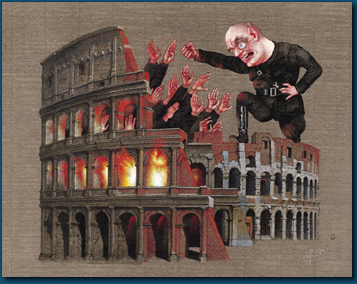 Die Verschwörung der schwarzen Teufel im Kolosseum zu Rom |
The
famous Renaissance sculptor and engraver wrote his autobiography in
two parts between 1558 and 1566. It was first printed in 1728. The
Vita describes Cellini's works and those who commissioned them, and
also his turbulent life and the "dark side" to this strong-willed
and pugnacious artist. |
|
The
book was widely read in Italy after it was first published. At the end
of the eighteenth century it was rediscovered and translated into other
languages.
Prechtl depicts Cellini's life in 32 pictures. As there is only one existing authentic portrait of Cellini, Prechtl invented his own Benvenuto. |
|||
|
|
|||
|
|
|||
|
|
|||
|
|